Make Your HMS Alliance Visit Unforgettable: 8 Key Details to Spot
- View news filtered by: 21st Century
- View news filtered by: Ships and Aircraft
- View news filtered by: HMS Alliance
- View news filtered by type: Listicle
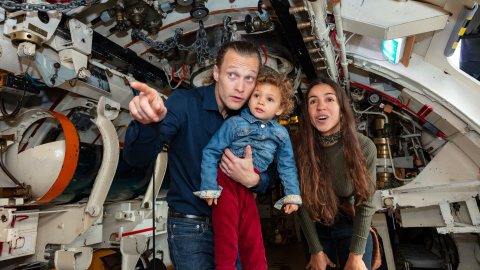
The displays on HMS Alliance are full of references to her 26-year history and the lives of the crew on board.
Here are some to look out for that have an intriguing story behind them:
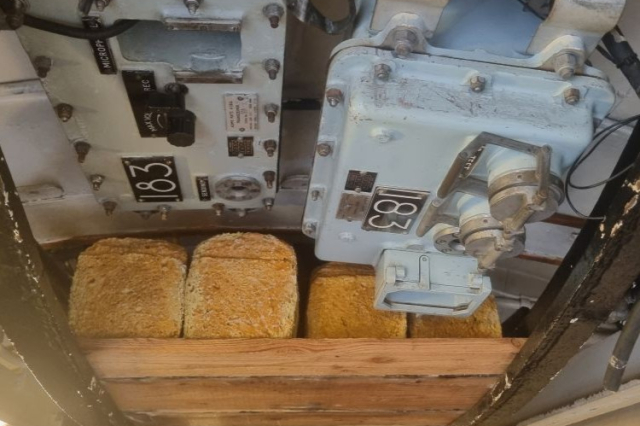
Loaves of bread
(Forward Torpedo Compartment)
Every nook and cranny on board a submarine was used for storage. Bread did not last very long because of the condensation that built up and it soon went mouldy. This didn’t bother submariners, as they just cut the mould off or ate it as it was. Between 400 and 500 loaves of bread were stowed on the submarine at deployment. They were the last thing to be loaded. They would be put on wooden slats on top of the torpedo loading rails.
When the fresh bread ran out, the chef would bake fresh bread with the submarine loaf being several inches longer than the average. Baking bread became a daily ritual which was welcomed by the crew as the delicious aroma which resulted almost overcame, briefly, the smell of diesel and sweat that normally pervaded the entire boat (as submariners referred to them).
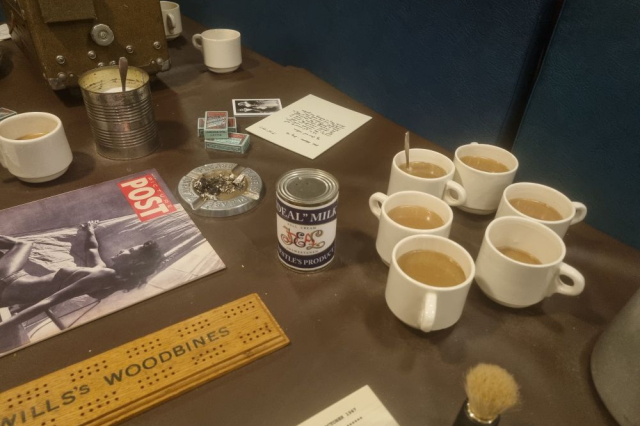
Ideal (evaporated) milk
(Junior Rates’ Mess)
Alliance did not carry fresh milk as there was not the space to keep it refrigerated. Instead, the crew drank evaporated milk in their tea. The fridges were below deck and storage of fresh meat was prioritised.
A tea break was part of the daily routine: ‘Stand easy’ – a 15-minute tea/coffee/biscuit break; lunch was at midday; tea break was at 4pm and dinner was at 6pm.
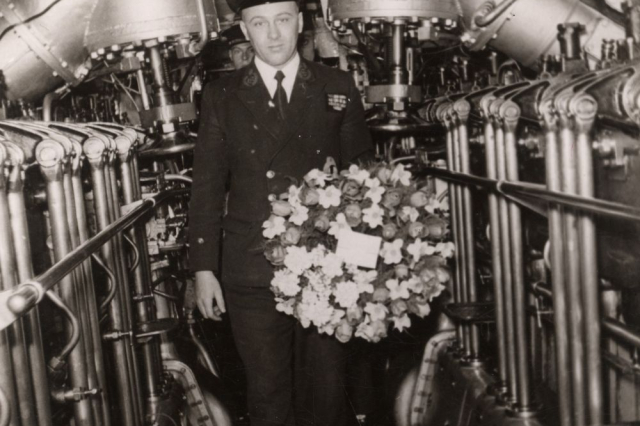
Wreath
(Petty Officers’ Mess)
The crew of HMS Alliance lay wreaths at the spot where her sister submarine, HMS Affray, sank with the loss of the whole crew in 1951.
The museum used historical images and consulted a florist to ascertain exactly what flowers would have been in season at the time to create this replica. It contains daffodils, carnations, tulips and lily of the valley.
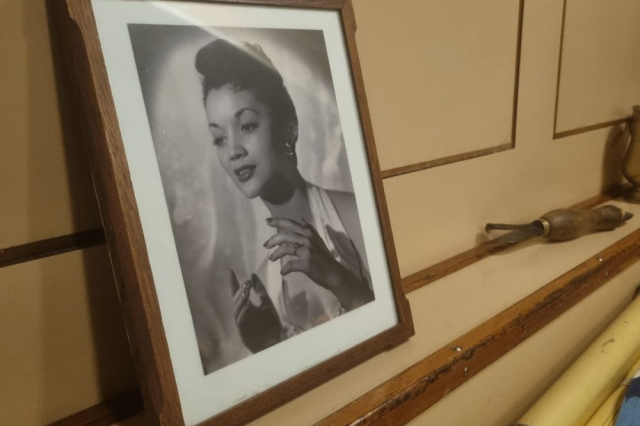
Photograph of Lita Roza
(Engine Room Artificers’ Mess)
HMS Alliance was adopted by Lita Roza, a 1950s pop singer, famed for singing ‘How much is that doggie in the window’. In 1954, the crew spent three days with her and took her to the funfair at Southsea Pier and to the Kings Theatre, Portsmouth where they gifted her a model submarine.
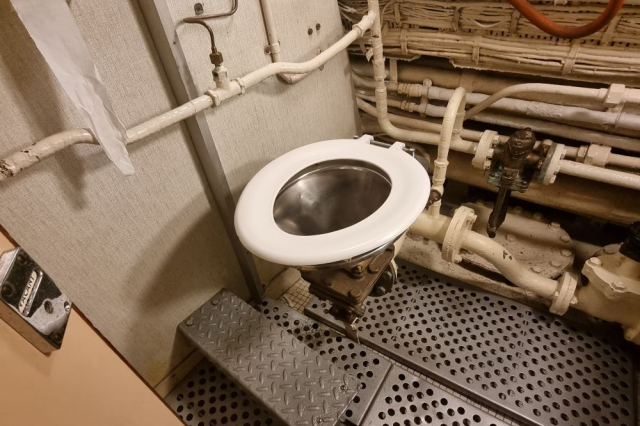
The white toilet aka ‘The Throne’
(Passageway/Toilets)
Officers had their own ‘heads’ (the Royal Navy word for toilets) and this white toilet was nicknamed ‘the Throne’ because of who used it. The higher rank you were, the nicer toilet paper you got. The officers had soft toilet paper.
The A Class of submarines (which included HMS Alliance) was the first class to have doors on the cubicle for privacy. However, if the submarine dived whilst someone was inside the cubicle, the increase in pressure would cause the doors to seal shut, so not everyone bothered to close them.
The toilets were flushed using a high-pressure hose.
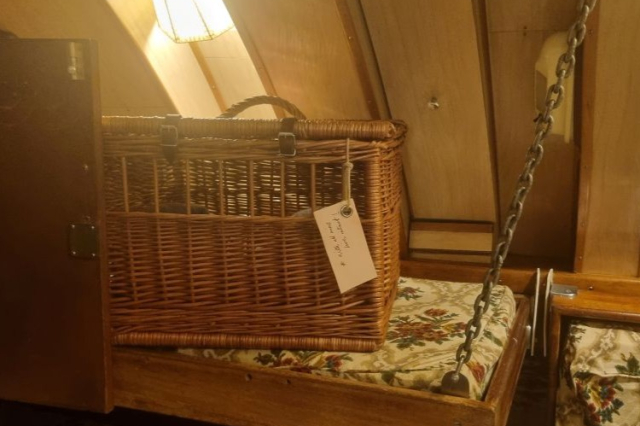
Cat basket
(Wardroom)
HMS Alliance had a pet cat for a short period in the early 1960s, as a Commander of the 7th Submarine Squadron, based in South-East Asia, wanted to get the cat back to the UK avoiding the six-month quarantine period. The cat did not enjoy being on a submarine!
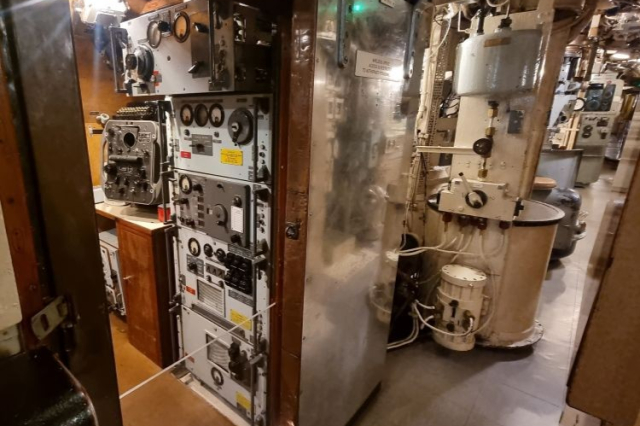
Metal lined door
(Wireless Telegraphy Office)
The Wireless Telegraphy (WT) office contained all the equipment for sending and receiving transmissions, either in Morse code or as radio signals. The door to this compartment was always kept shut when receiving and transmitting. The door was lined with metal so that no one external to the compartment could intercept the messages.
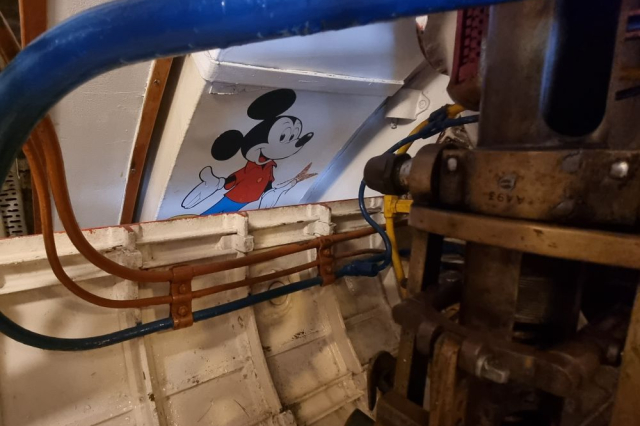
Disney characters
(Aft Torpedo Compartment)
At the back (or ‘aft’ as it is known in the Royal Navy) of the submarine, hidden behind the torpedo, are Mickey Mouse and Donald Duck which crew members added to the ‘bulkhead’ (‘wall’ in naval slang) to personalise their living space. The captain allowed it and did not insist that they were painted over. This compartment served as a mess area (living and eating space) as well as a torpedo loading space, first aid area and escape compartment.